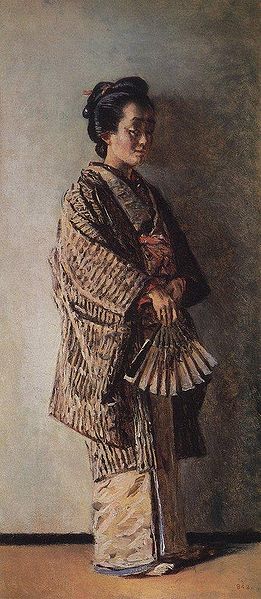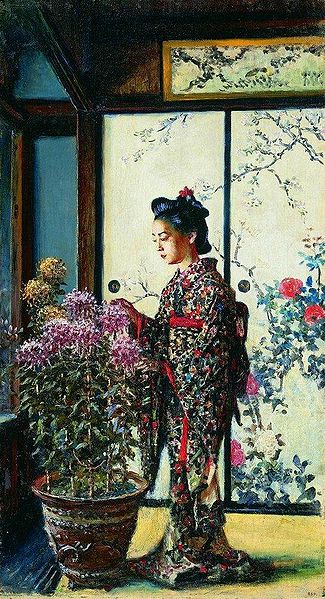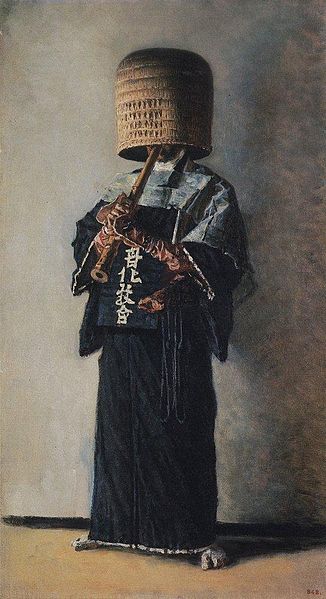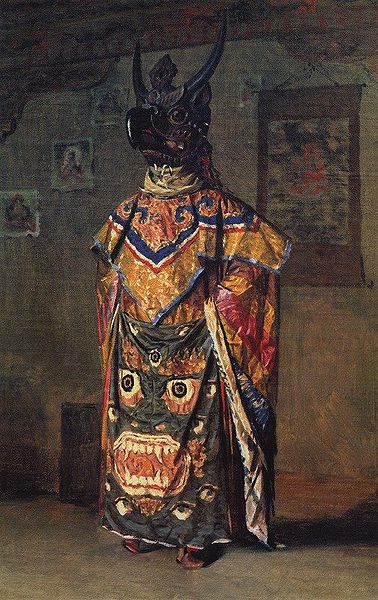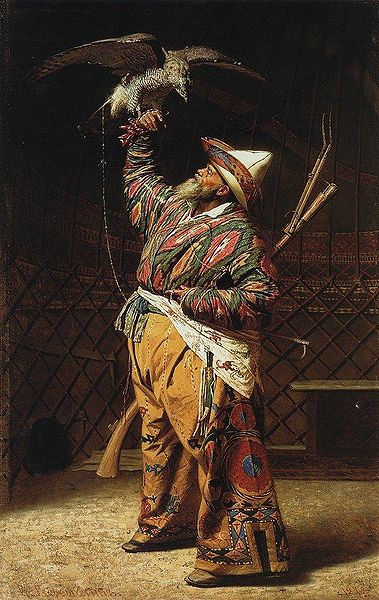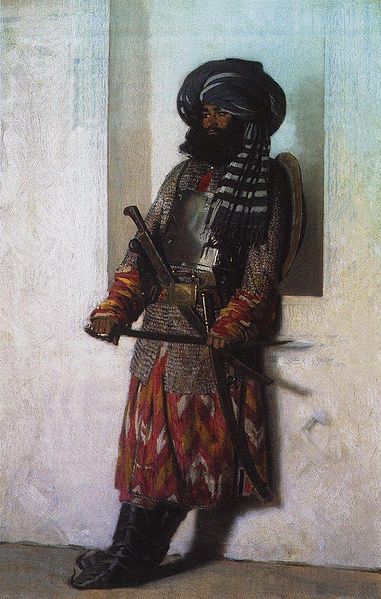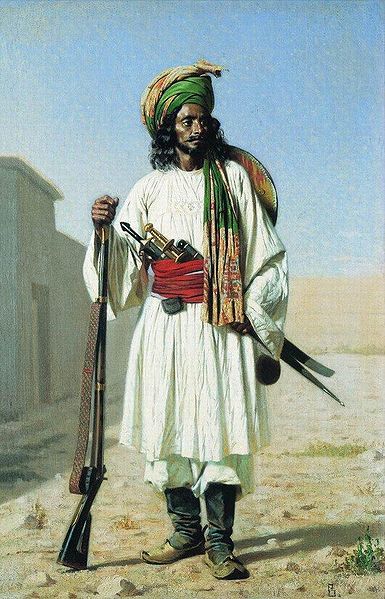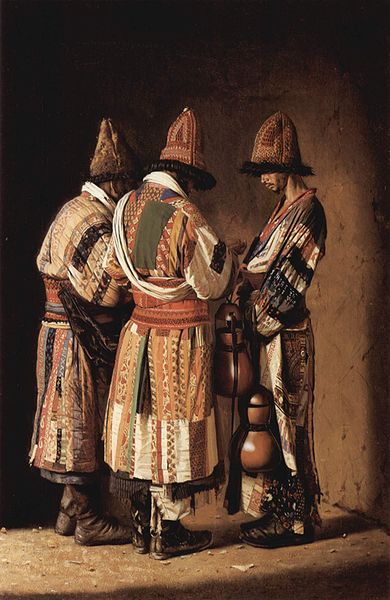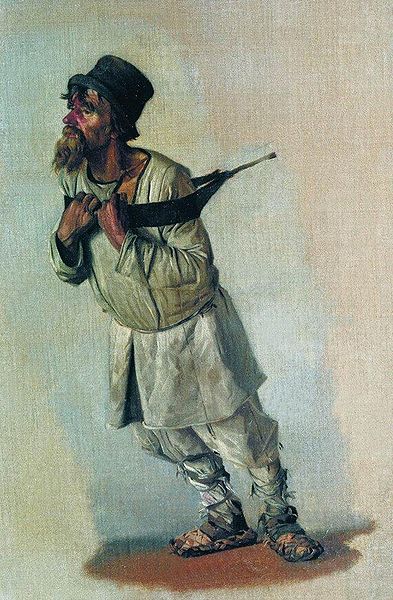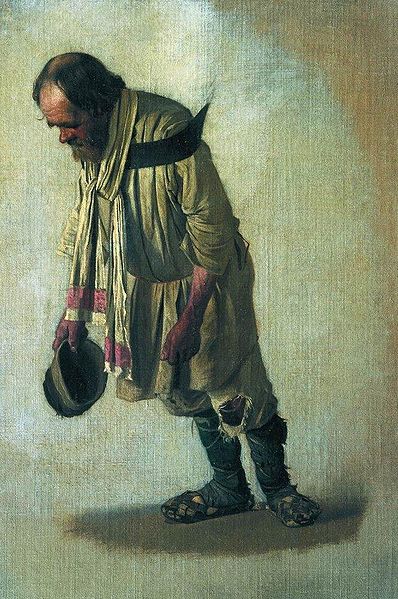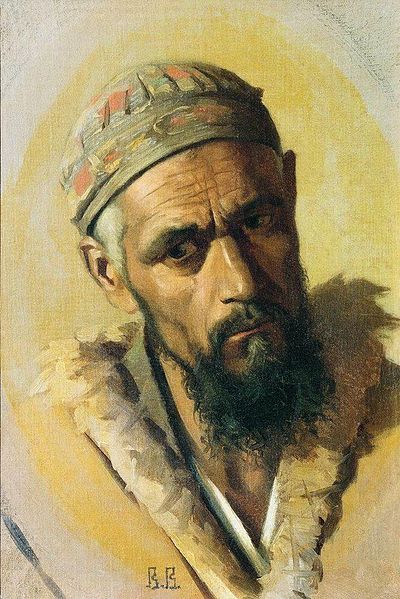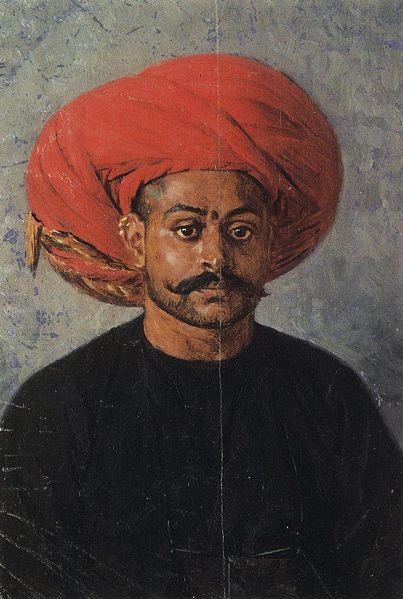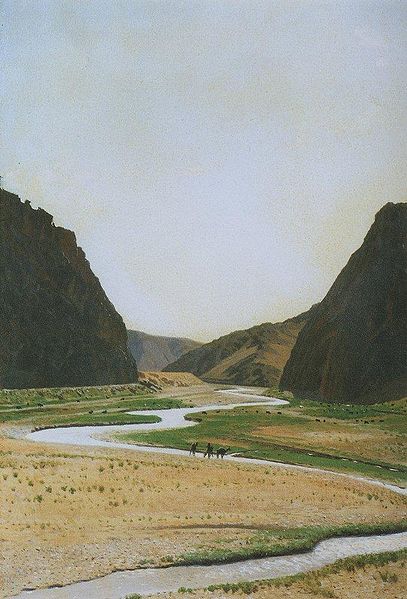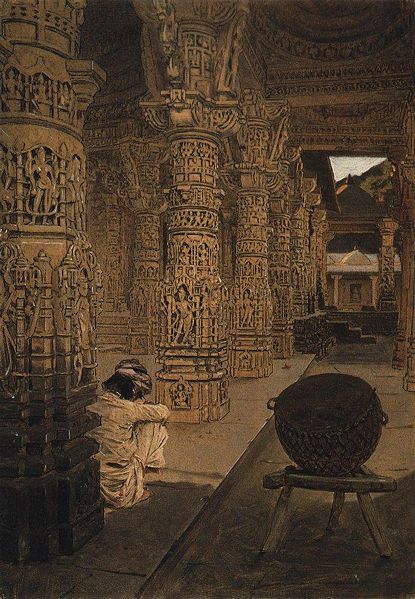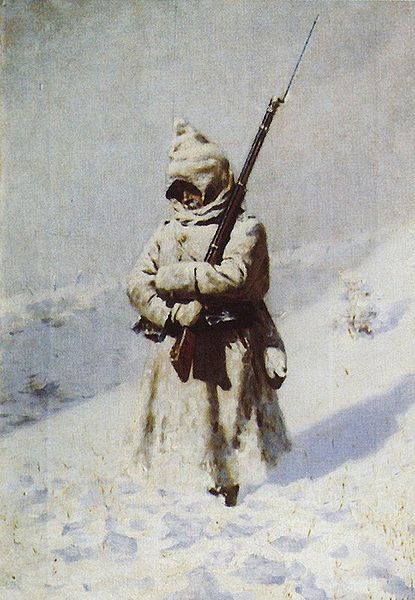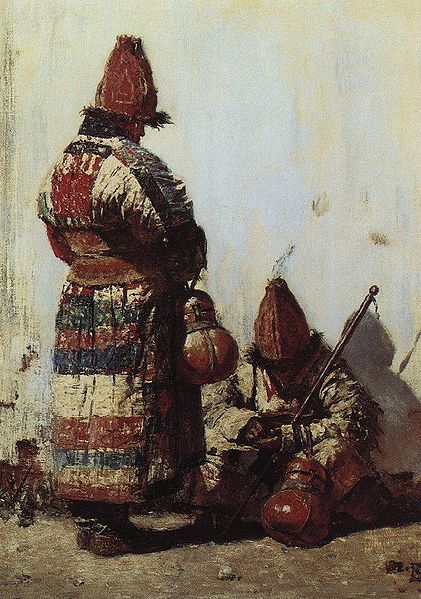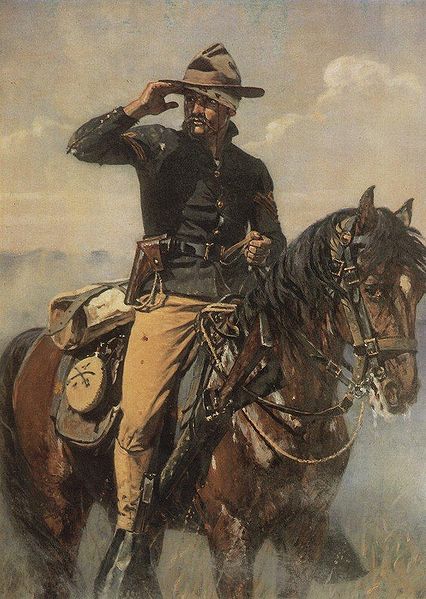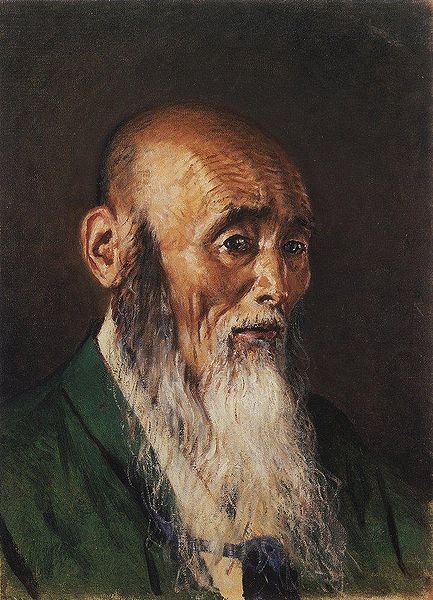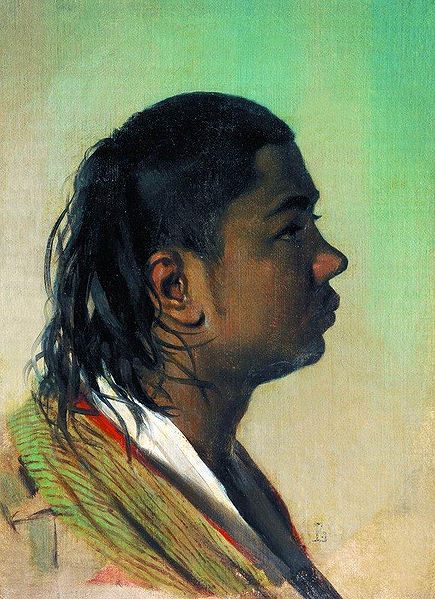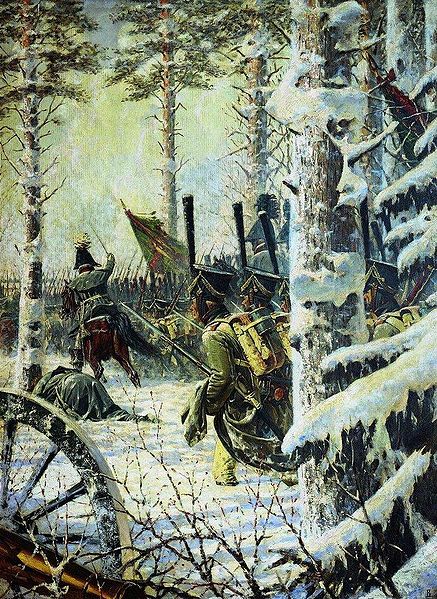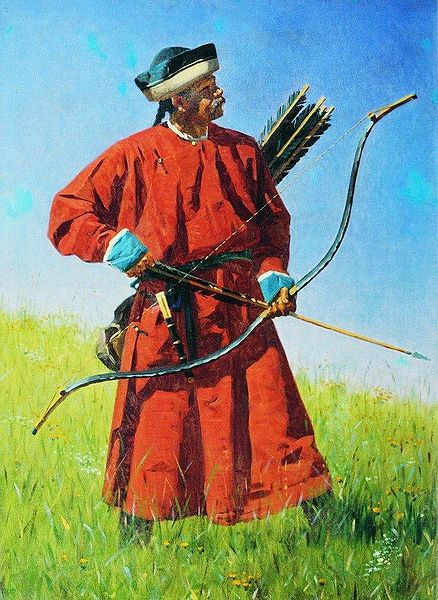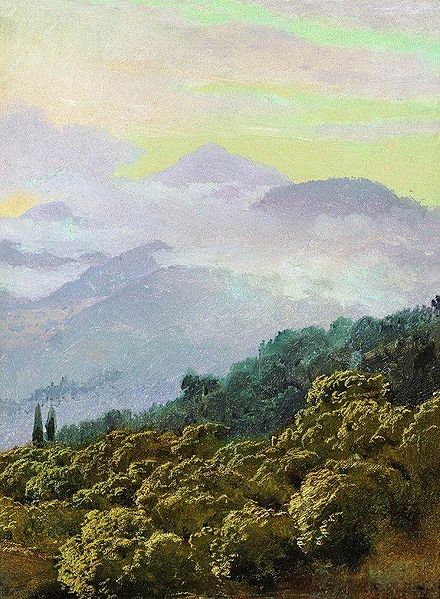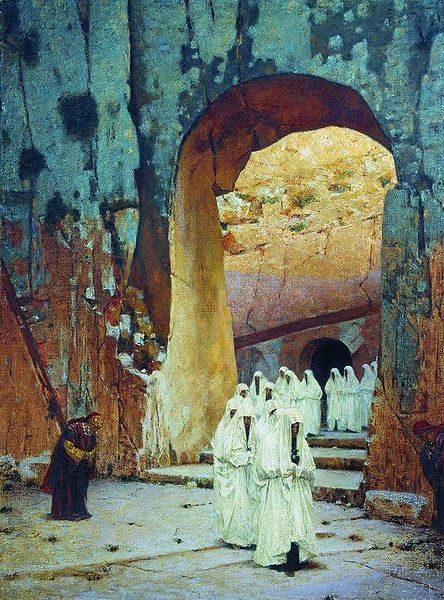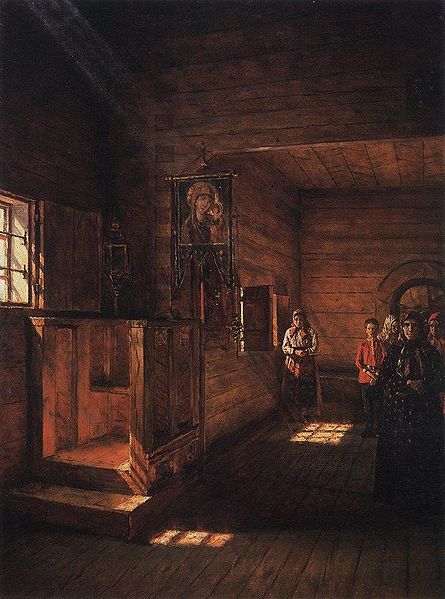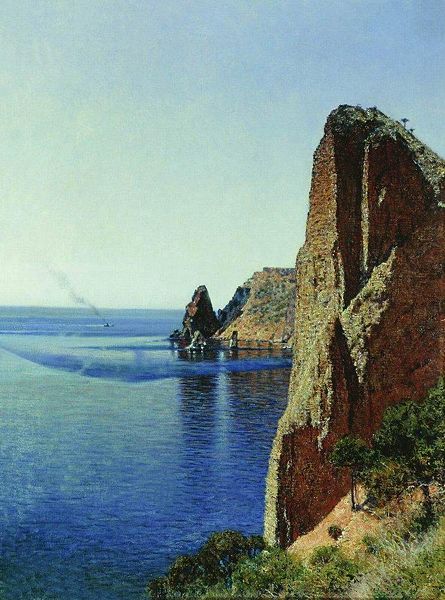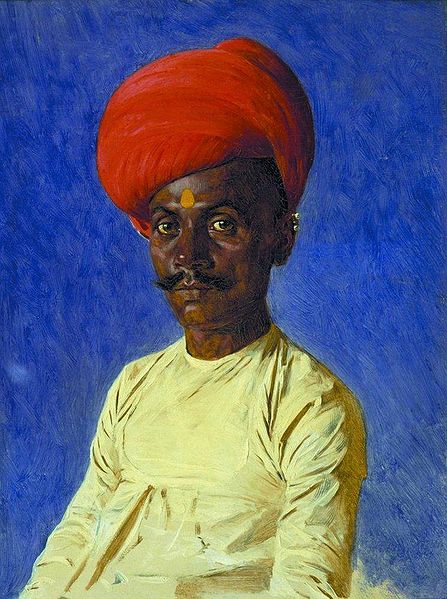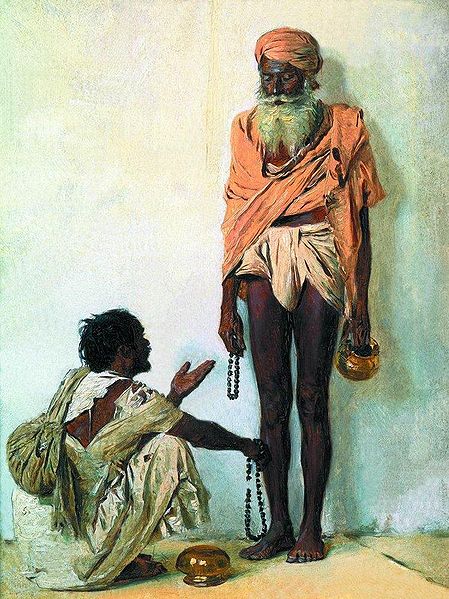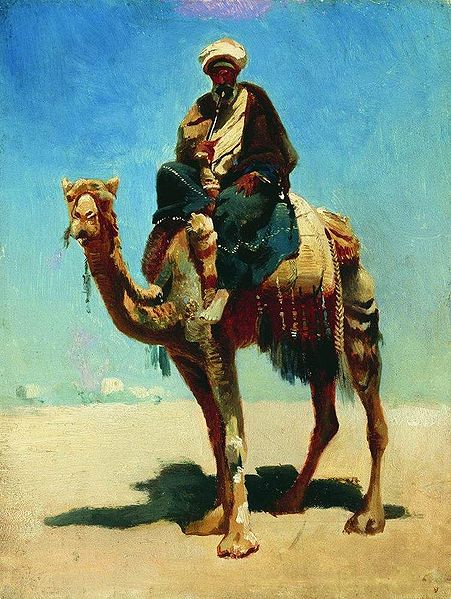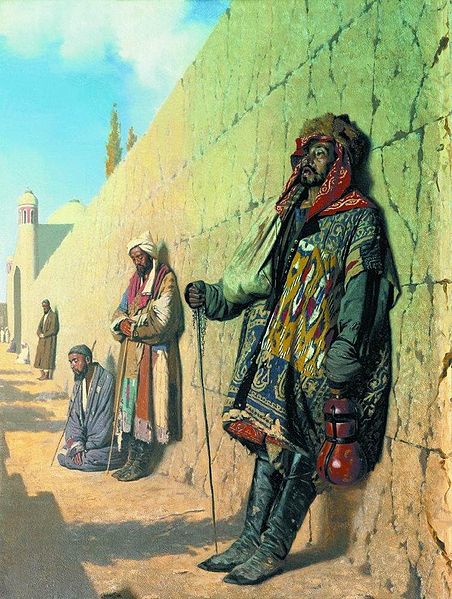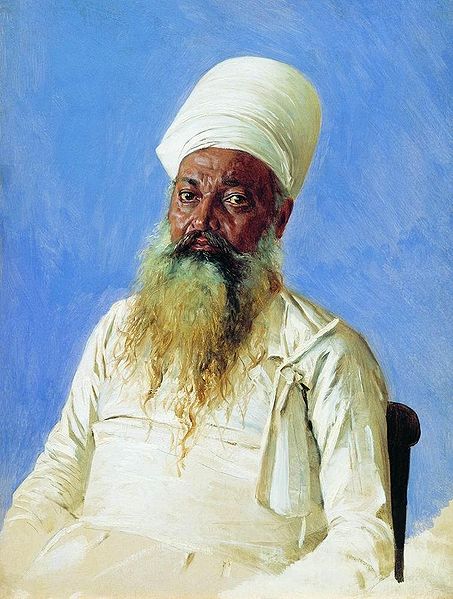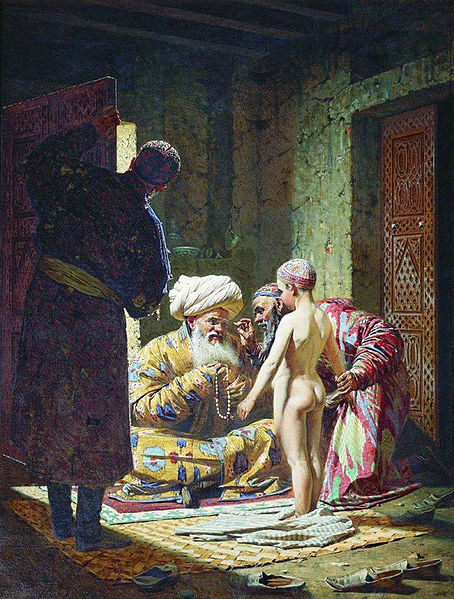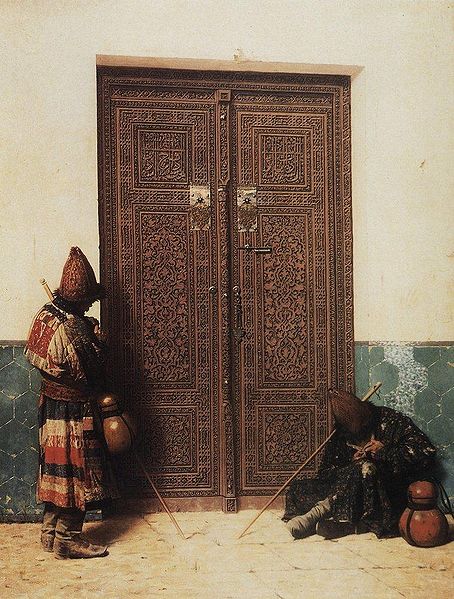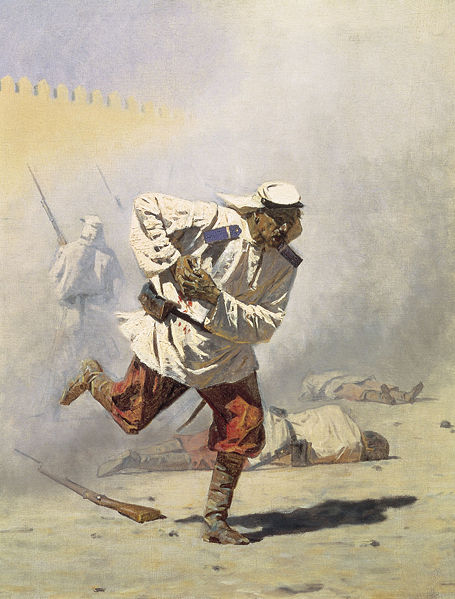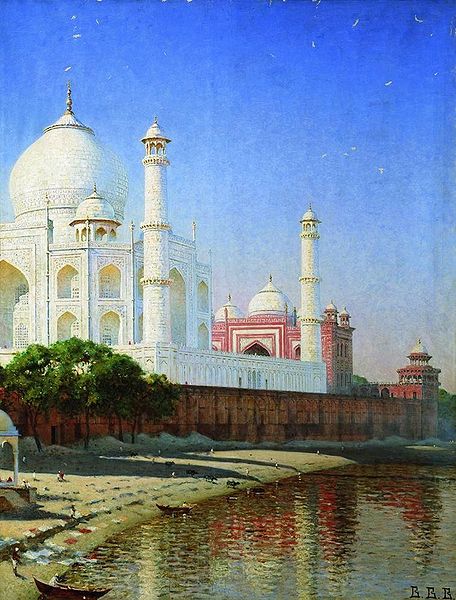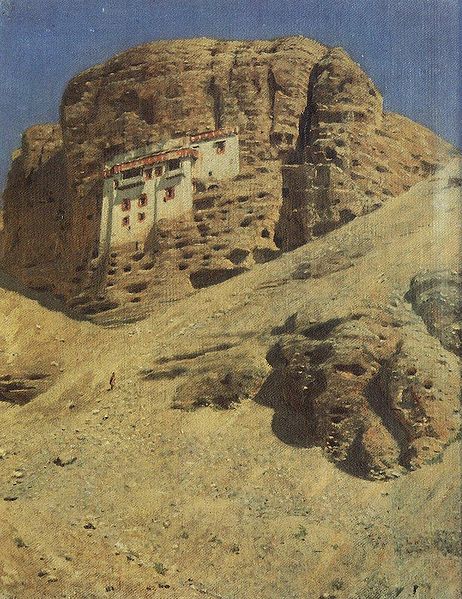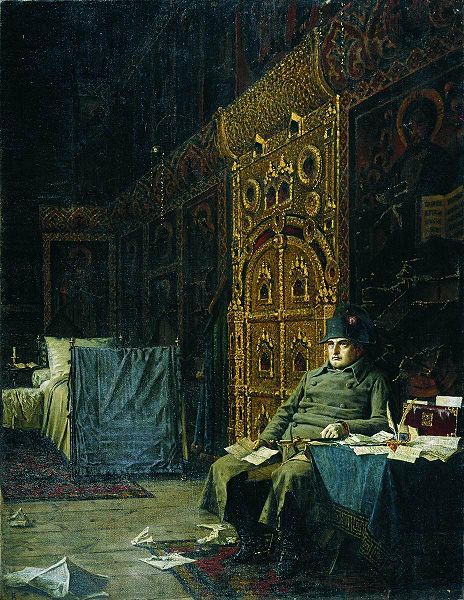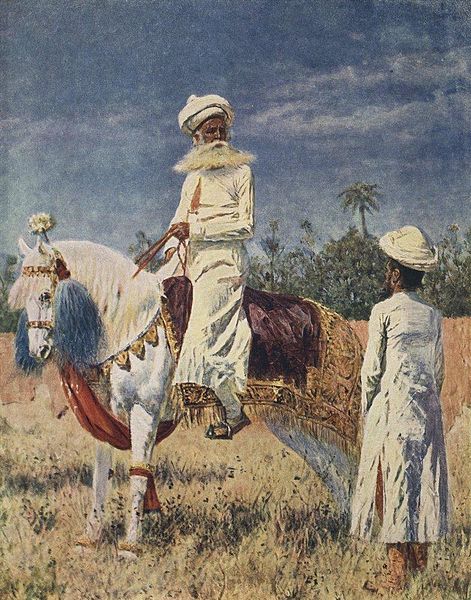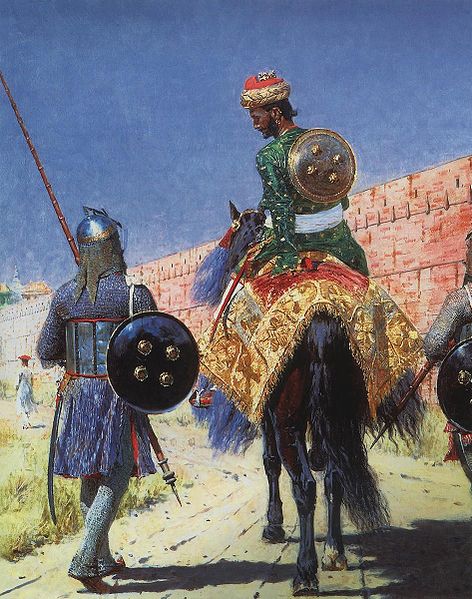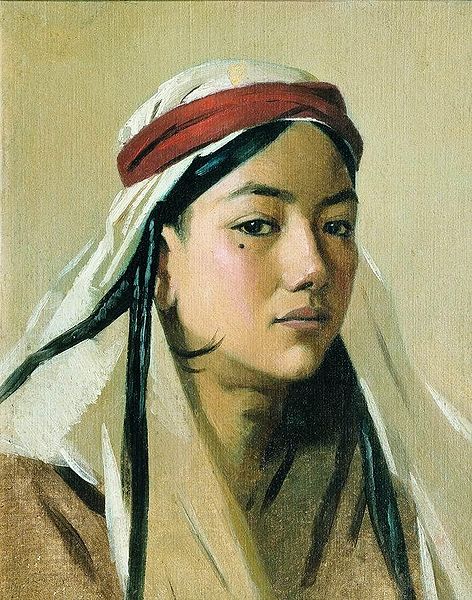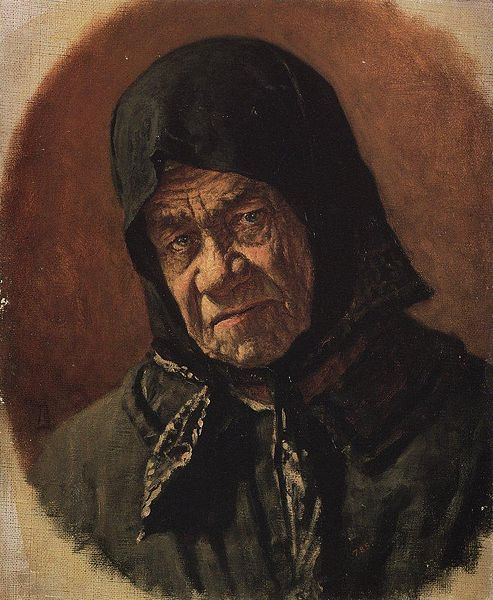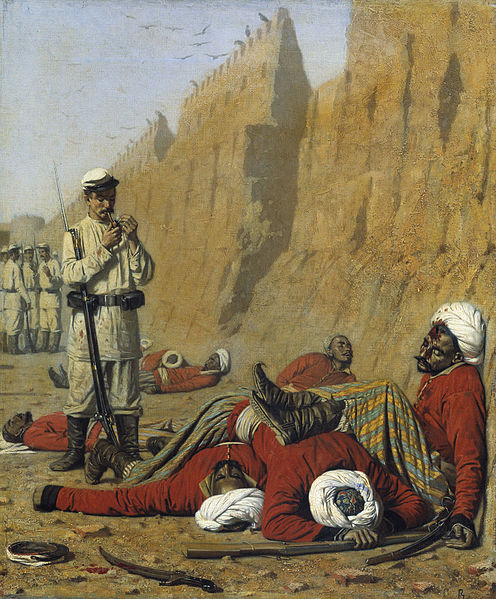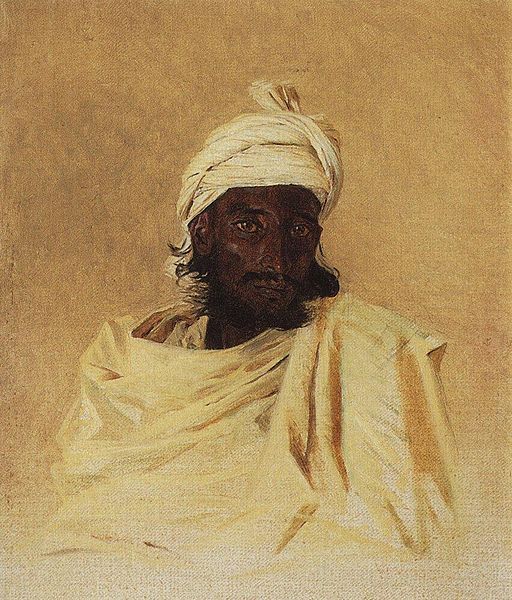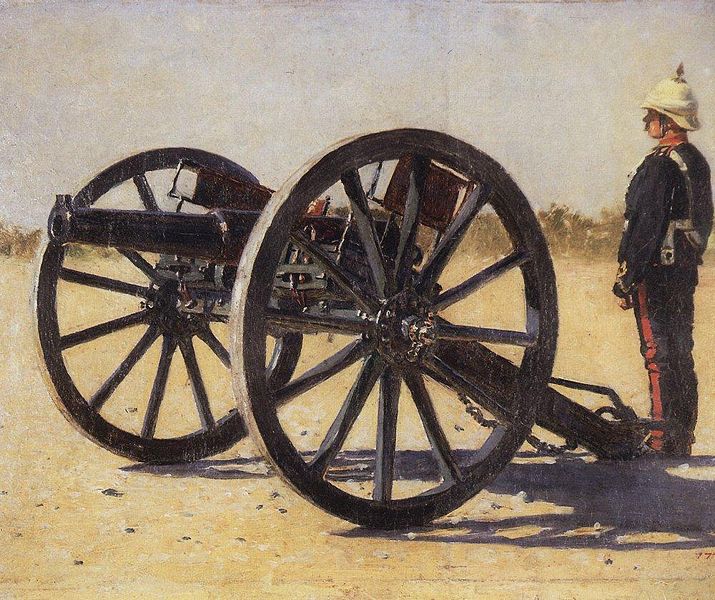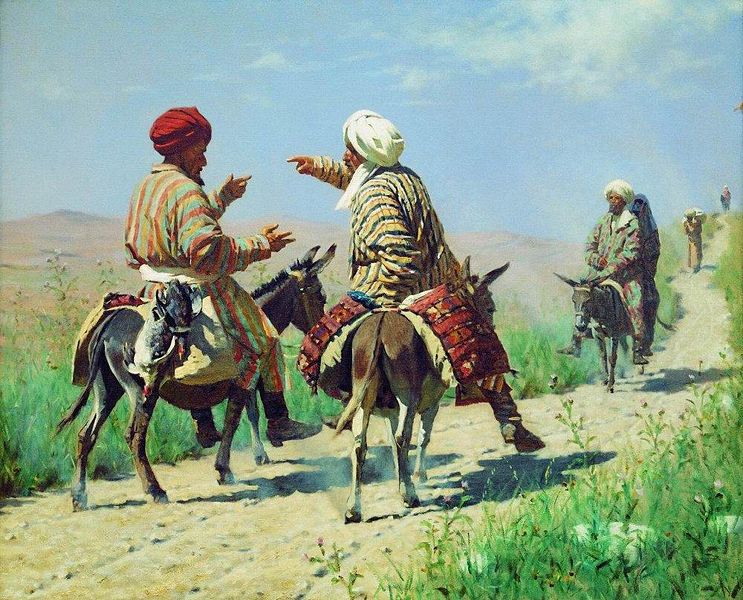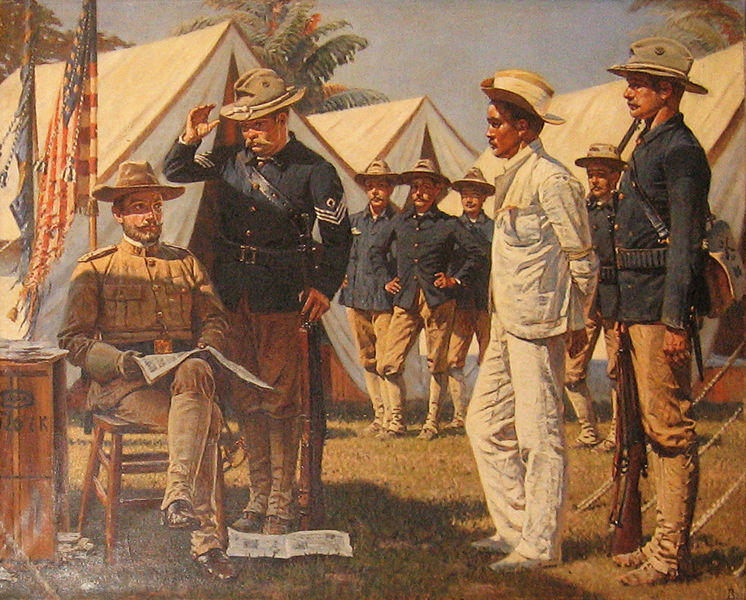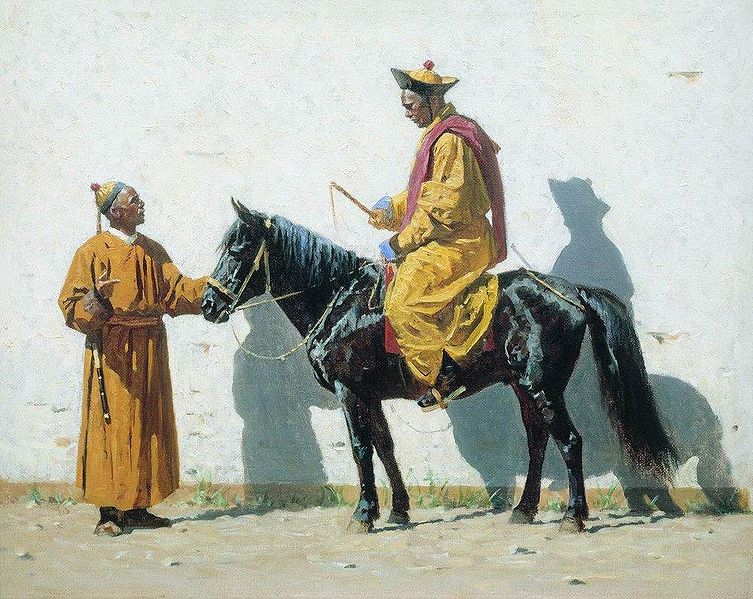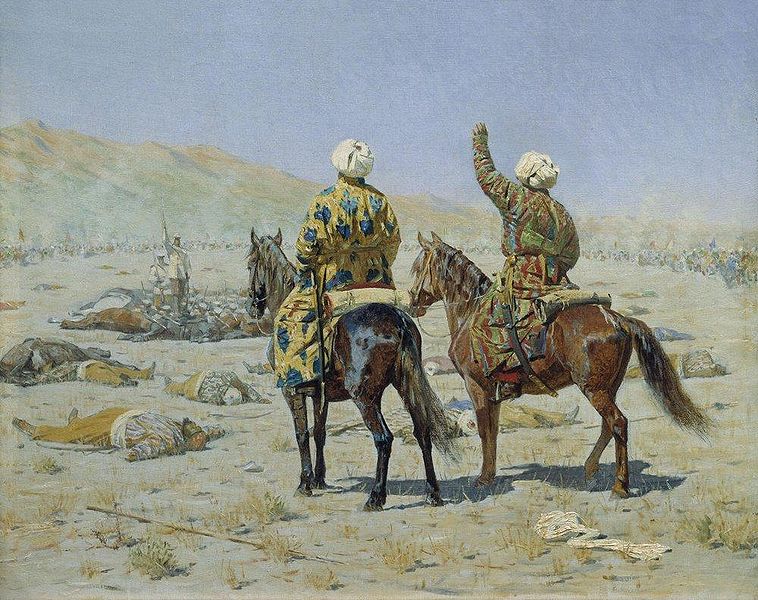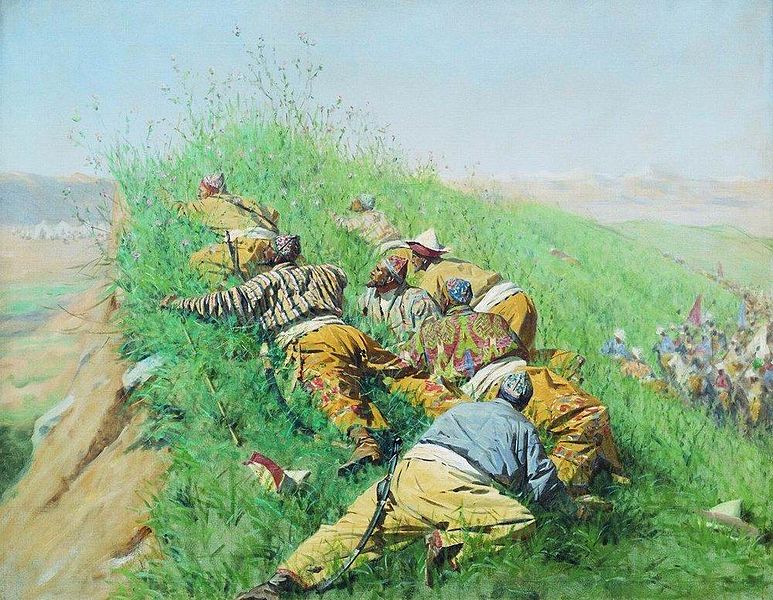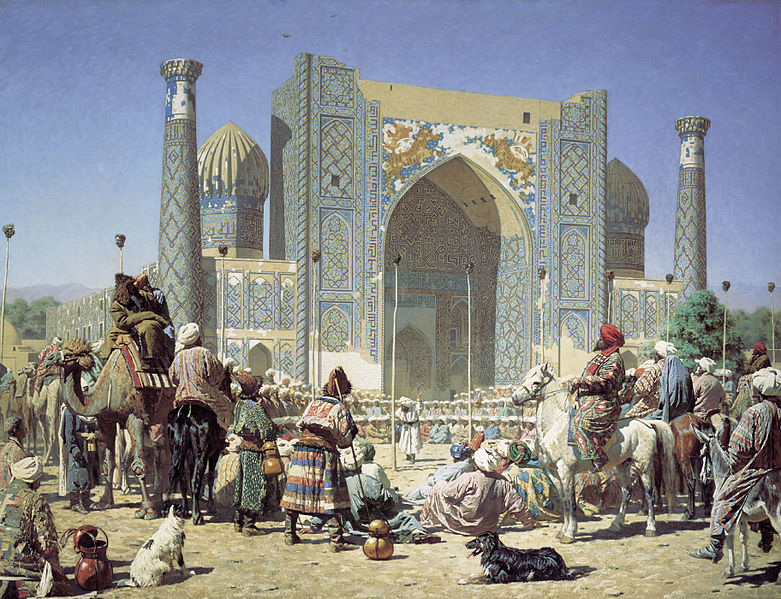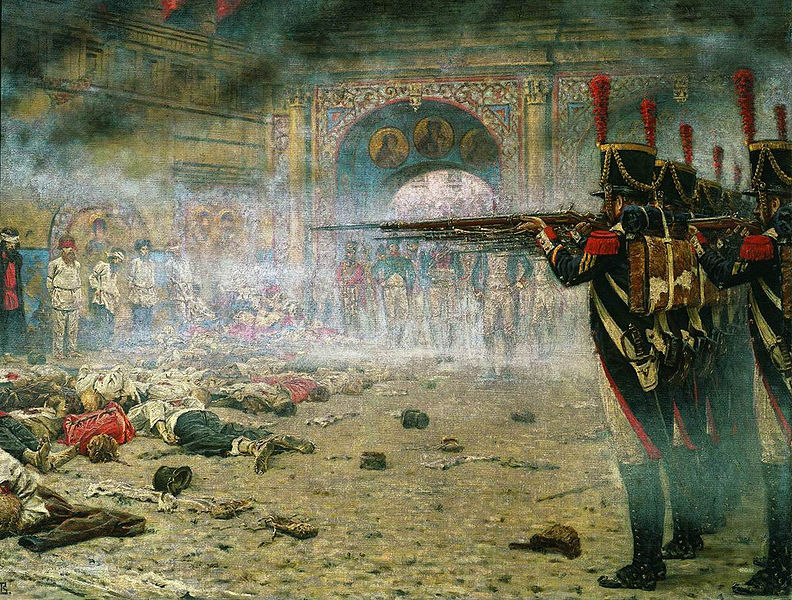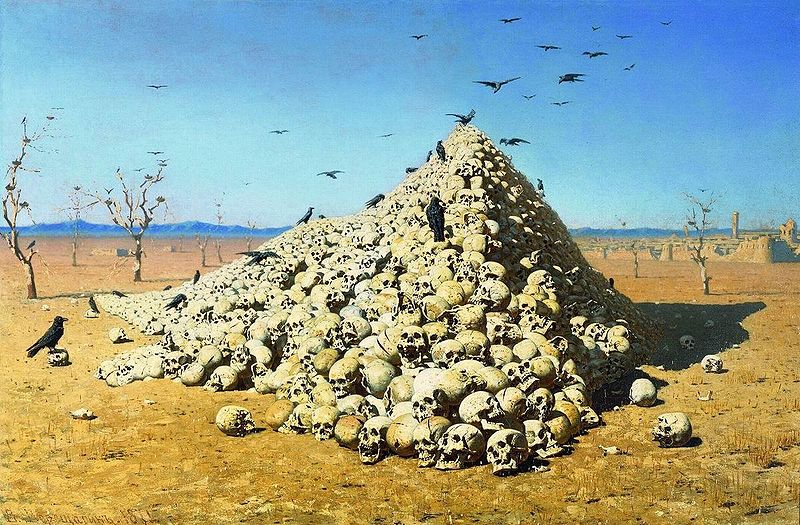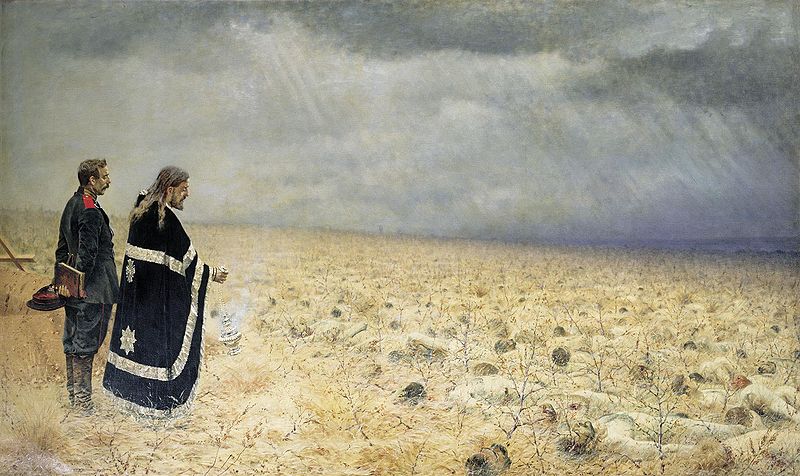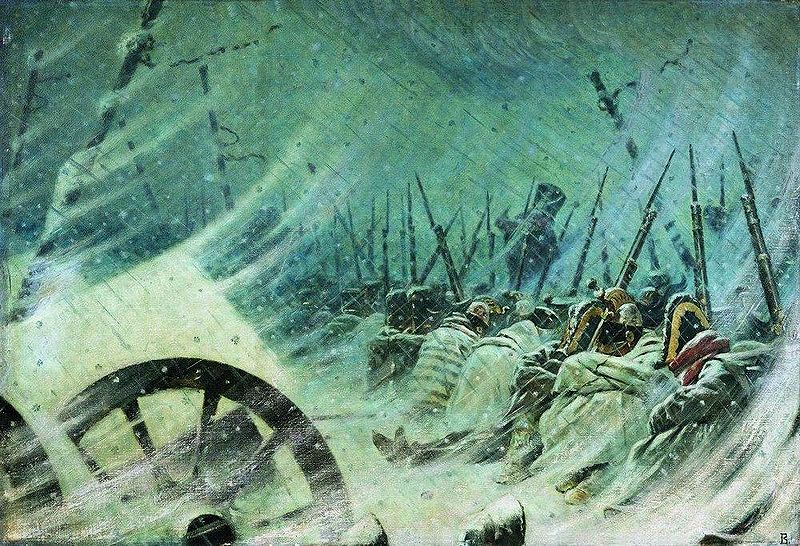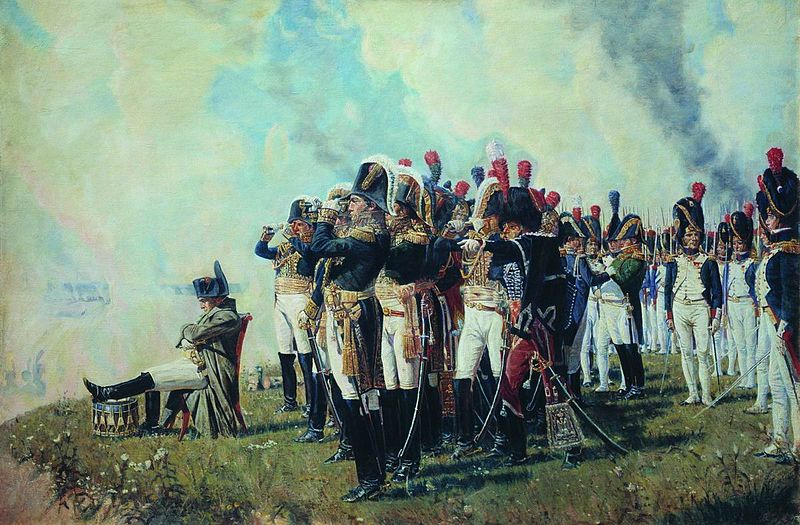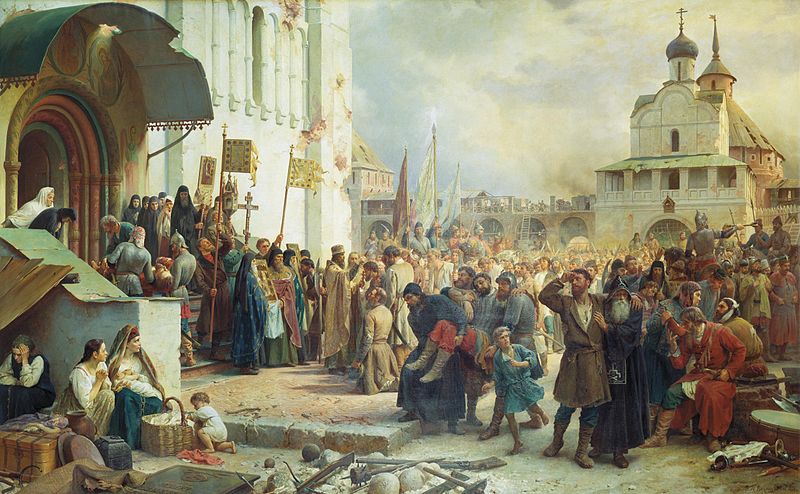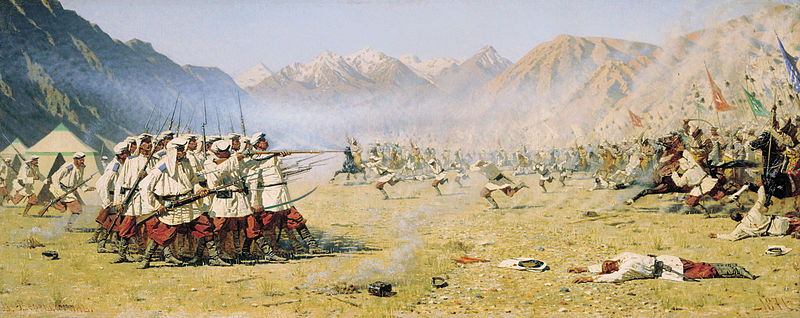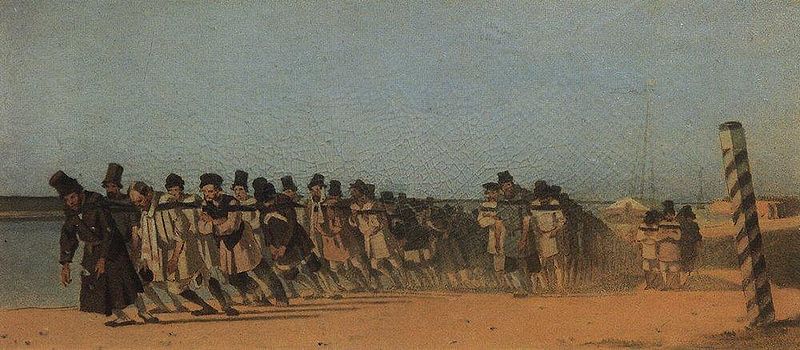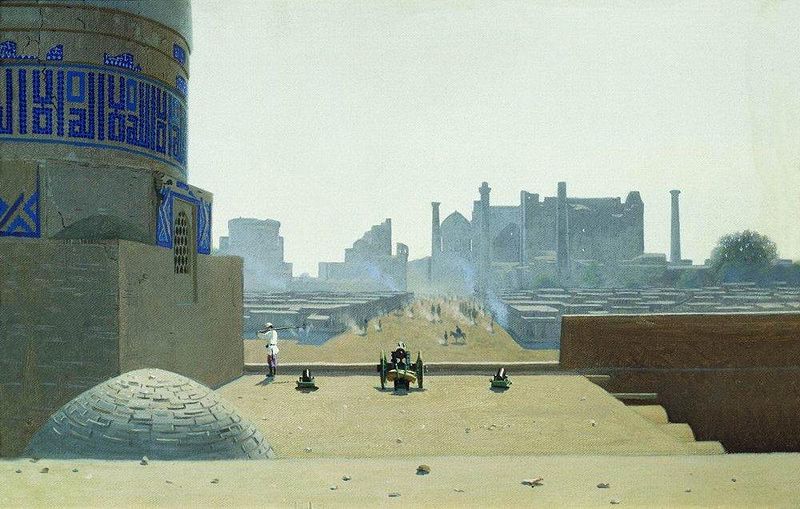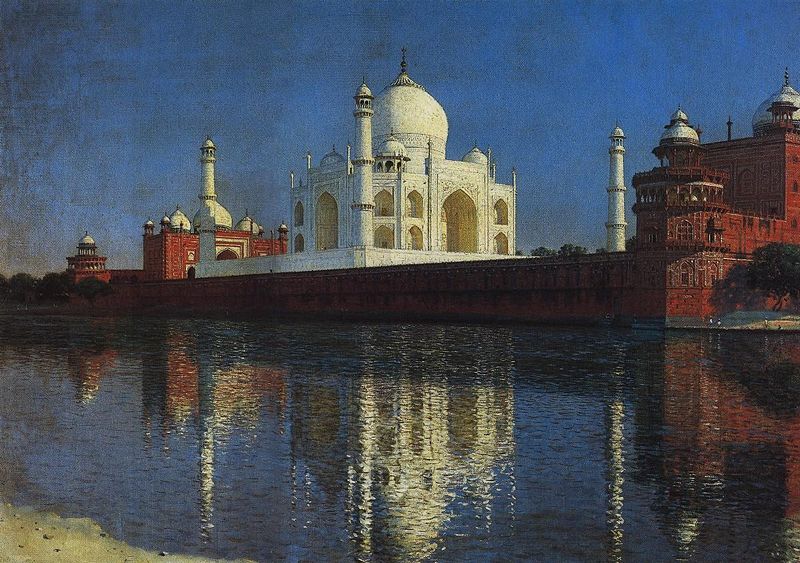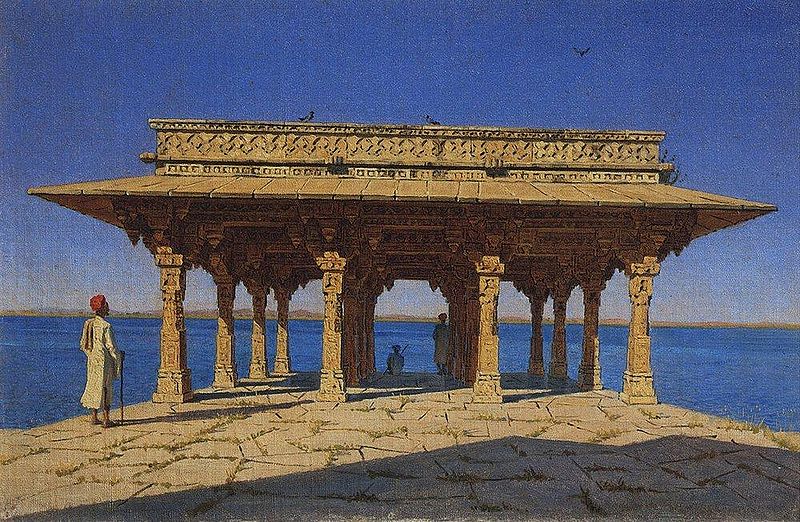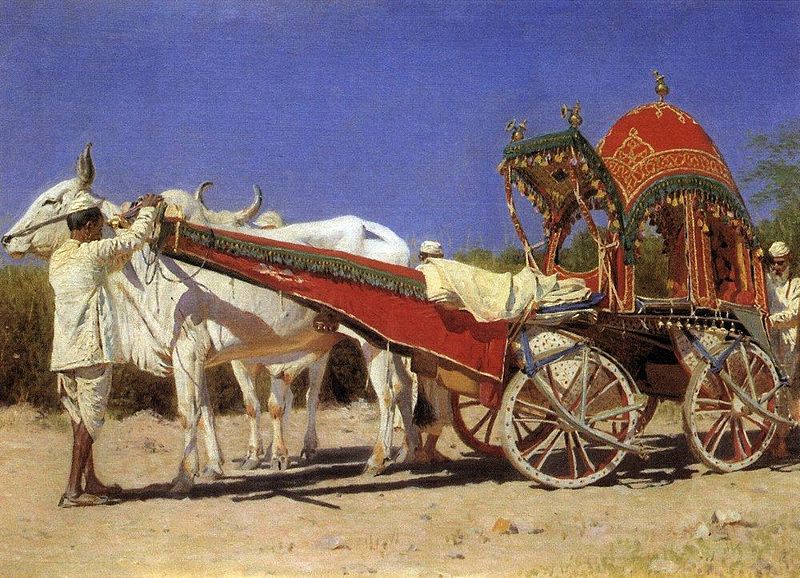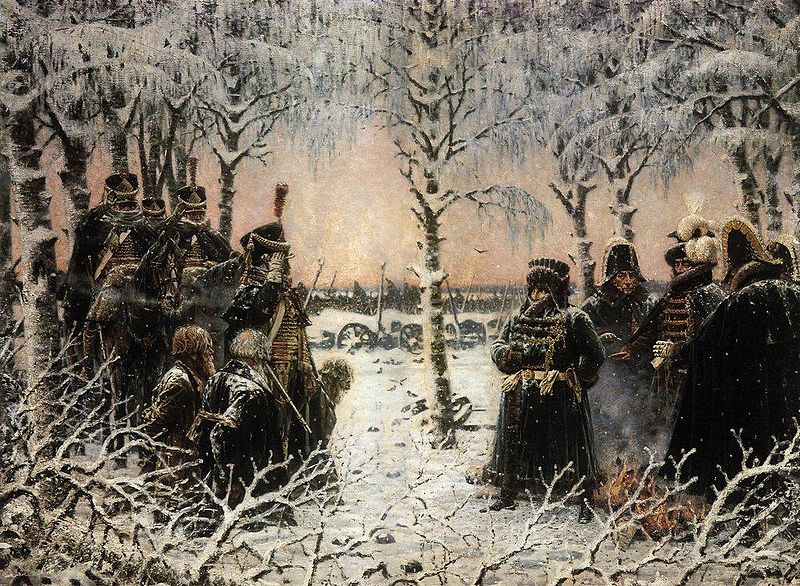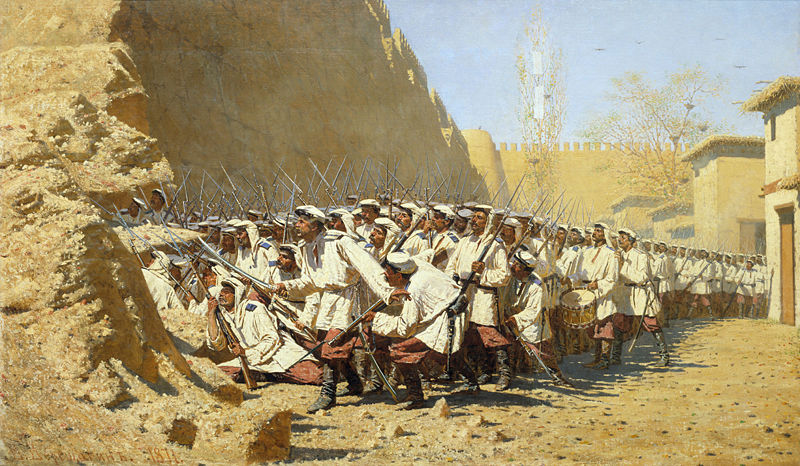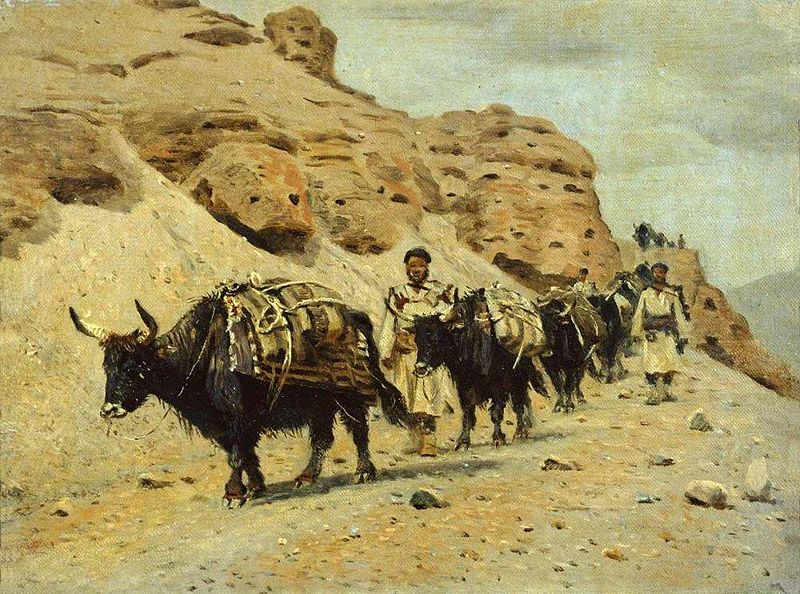<Back to Index>
- Prime Minister of Denmark Thorvald August Marinus Stauning, 1873
- Painter Vasily Vasilyevich Vereshchagin, 1842
- Shah of Iran Mohammad Rezā Pahlavi, 1919
PAGE SPONSOR
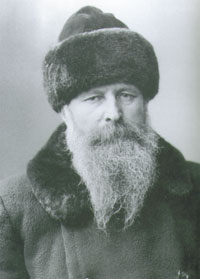
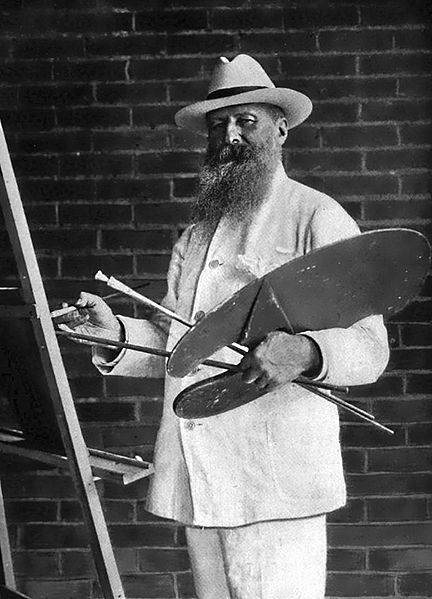
Vasily Vasilyevich Vereshchagin (Russian: Васи́лий Васи́льевич Вереща́гин, October 26, 1842 – April 13, 1904) was one of the most famous Russian battle painters and one of the first Russian artists to be widely recognized abroad. The graphic nature of his realist scenes led many of them to never be printed or exhibited.
Vereshchagin was born at Cherepovets, Novgorod Governorate, Russia in 1842 as the middle of three brothers. His father was a landowner of noble birth. When he was eight years old he was sent to Tsarskoe Selo to enter the Alexander Cadet Corps, and three years later he entered the Sea Cadet Corps at St Petersburg, making his first voyage in 1858. He served on the frigate Kamchatka, which sailed to Denmark, France and Egypt.
Vereshchagin graduated first in the list at the naval school, but left the service immediately to begin the study of drawing in earnest. He won a medal two years later, in 1863, from the St Petersburg Academy for his Ulysses Slaying the Suitors. In 1864 he proceeded to Paris, where he studied under Jean - Léon Gérôme, though he dissented widely from his master's methods.
In the Paris Salon of 1866 he exhibited a drawing of Dukhobors chanting their Psalms. In the next year he was invited to accompany General Konstantin Kaufman's expedition to Turkestan. He was granted the rank of ensign. His heroism at the siege of Samarkand from June 2–8, 1868 resulted an award of the Cross of St George (4th
class). He was an indefatigable traveler, returning to St. Petersburg
in late 1868, to Paris in 1869, back to St. Petersburg later in the
year, and then back to Turkestan at the end 1869 via Siberia. In 1871, he established an atelier in Munich, and made a sole exhibition of his works at the Crystal Palace in London in 1873. He made another exhibition of his works in St. Petersburg in 1874, where two of his painting, namely The Apotheosis of War, dedicated "to all conquerors, past, present and to come," and Left Behind,
the picture of a dying soldier deserted by his fellows, were denied a
showing on the grounds that they portrayed the Russian military in a
poor light. In late 1874, he departed for an extensive tour of the Himalayas, India and Tibet, spending over two years in travel. He returned to Paris in late 1876.
With the start of the Russo - Turkish War (1877 – 1878), Vereshchagin left Paris and returned to active service with the Imperial Russian Army. He was with the Russian army during the the crossing of the Shipka Pass and at the Siege of Plevna, where his brother was killed; and he was dangerously wounded during the preparations for the crossing of the Danube near Rustchuk. At the conclusion of the war he acted as secretary to General Skobelev at San Stefano.
After
the war he settled at Munich, where Vereshchagin produced his war
pictures so rapidly that he was freely accused of employing assistants.
The sensational subjects of his pictures, and their didactic aim, the
promotion of peace by a representation of the horrors of war, attracted a
large section of the public not usually interested in art to the series
of exhibitions of his paintings in Paris in 1881 and subsequently in
London, Berlin, Dresden, Vienna and other cities.
Vereshchagin painted several scenes of imperial rule in British India. His epic portrayal of The State Procession of the Prince of Wales into Jaipur in 1876 is claimed to be the third largest painting in the world. In 1882 - 1883, he again traveled to India. He aroused much controversy by his series of three pictures of a Roman execution (the Crucifixion); of sepoys blown from the guns in India; and of the execution of Nihilists in St Petersburg. His picture Blowing from Guns in British India depicted executions carried out by tying victims to the barrels of guns. Vereshchagin's detractors argued that such executions had only occurred in the Indian Rebellion of 1857, but the painting depicted modern soldiers of the 1880s, implying that the practice was normal. Because of its photographic style, the painting appeared to present itself as impartial record of a real event. In the Magazine of Art in December 1887 Vereshchagin defended himself, rather evasively, by saying that this mode of execution was "the most humane in existence" and that if there were another rebellion then the British would use it again. A journey in Syria and Palestine in 1884 furnished him with an equally discussed set of subjects from the New Testament. Vereshchagin's paintings caused controversy over portraying the figure of Christ with what was thought at the time to be an unseemly realism. His depiction of Jesus's features was thought of as excessively vulgar and over - emphatically Semitic in ethnicity.
The "1812" series on Napoleon's Russian campaign, on which Vereshchagin also wrote a book, seem to have been inspired by Tolstoi's War and Peace, and were painted in 1893 at Moscow, where the artist eventually settled.
Vereshchagin was in the Far East during the First Sino - Japanese War, with the American troops in the Philippines, and with the Russian troops in Manchuria. During the Russo - Japanese War, he was invited by Admiral Stepan Makarov to join him aboard Makarov's flagship, Petropavlovsk. On April 13, 1904, Petropavlovsk struck two mines while returning to Port Arthur and
sank, taking down with it most of the crew, including both Admiral
Makarov and Vereshchagin. Vereshchagin's last work, a picture of a
council of war presided over by Admiral Makarov, was recovered almost
undamaged.
The town of Vereshchagino in Perm Krai is named after him, as well as a minor planet, 3410 Vereshchagin, discovered by Soviet astronomer Lyudmila Zhuravlyova in 1978.
